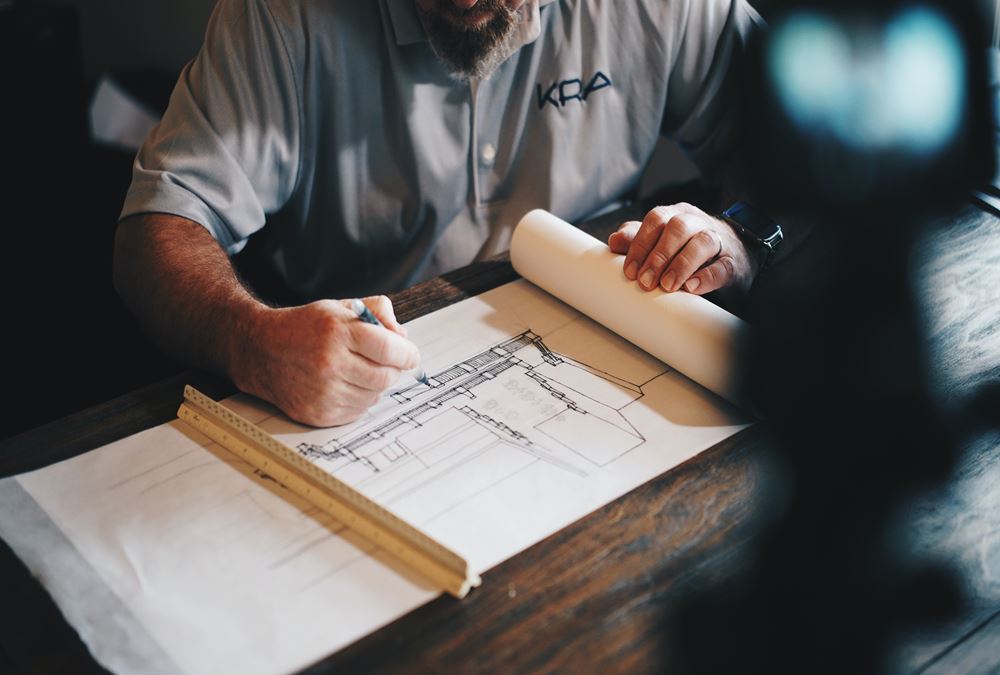- Home
- Business Processes
- Industry Knowledge
- Aerospace Industry
- Automotive Industry
- Banking Domain
- BFSI Industry
- Consumer/ FMCG Industry
- Chemicals Industry
- Engineering & Construction
- Energy Industry
- Education Domain
- Finance Domain
- Hospitality Domain
- Healthcare Industry
- Insurance Domain
- Retail Industry
- Travel and Tourism Domain
- Telecom Industry
- Leadership Skills
- eLearning
- Home
- Industry Knowledge
- Engineering & Construction
- Roles in Construction Industry
Roles in Construction Industry
In general, there are various groups of stakeholders involved in a construction project. Each group contributing a specific component, examples are the owner group, the engineering group, and the construction group. In this article, we take a look at different roles that exist within the ambit of the construction industry.
The Owner or Client
The owner group supplies the "need" of the project and the finances required to fulfill this need. They are the driving force behind the construction industry. Their demands for housing, commercial facilities, industrial products, and infrastructure are the chief motivation to build. After determining the need and deciding to build, the owner is accountable for the following primary duties:
- Developing the program and outlining the needs and requirements of the end-users
- Determining the quantity, extent, and character of the project by defining the scope of work
- Creating the overall budget for the project, including land acquisition (if necessary), development, design, and construction costs
- Providing the funding for the project and making periodic payments to the designers and the contractor
- Clients are looking for the most economically feasible proposal
- Clients need certainty and confirmed timelines for delivery
The Engineering Group
The engineering group consists of area experts like architects, structural designers, and construction managers. These area experts supply the specifications, method statements, designs, and schedules of the project and perform supervision and quality control functions.
The Construction Group
The construction group consists of a matrix of contractors executing the various work packages. The construction management function entails various tasks performed by the contractor such as estimating, scheduling, cost control, and contract administration in order to monitor, manage, and control the work of the contract for which the contractor is obligated.
- Contractors are looking to making a sustainable and predictable margin
- Contractors want to remain “competitive” in the bid
- A scalable method to understand and quantify risk on projects
- The work is done and delivered to time
- Understanding risks in proposed work
Architects and Engineers
Two types of professional designers are engaged in the construction process, and each deals with different parts of the project design. Architects deal with the function, life safety issues, and aesthetics of the building, and engineers deal with the systems. They typically work together to complete the design function with one or the other taking the lead, depending on the type of facility being constructed.
Construction Manager
The construction manager works with both the architect and the engineer on a regular basis throughout the construction process. He is responsible for Assisting the owner in developing the facility program and determining end-user needs and requirements and developing the final building plans, construction details, and specifications.
Architects
Architects have licensed professionals trained in the art and science of building design. They transform the owner's program into concepts and then develop the concepts into building images and plans that can be constructed by others. In addition to completing a four- or five-year college program, architects are also required to have a number of years of experience and pass an exam before they can become licensed.
Architects design the overall aesthetic and functional look of buildings and other structures. Architects also specify the building materials and, in some cases, the interior furnishings. In developing designs, architects follow building codes, zoning laws, fire regulations, and other ordinances, such as those requiring easy access by people who are disabled.
Architectural Technicians
Architectural technicians are typically the drafters of the building plans. They are the ones who actually produce the drawings that are used for construction. They work from preliminary sketches and concept drawings provided by the design architects.
Specification Writers
The specification writer is responsible for spelling out the specific products and methods that are to be used on a project in order to ensure a particular level of performance and quality.
Engineers
Engineers are usually the lead designers for heavy civil and industrial projects. In building design, they are most often hired as consultants by the architects. In this scenario, they have no direct contact with the owner. There are many different engineering specialties; the most common ones associated with construction activities are structural engineers, mechanical engineers, electrical engineers, and civil engineers. Civil engineers design roads, bridges, tunnels, dams, site drainage, parking lots, runways, and water supply and sewage systems.
Landscape Architects
Landscape architects are professionals licensed and deal with the building site and outside environmental issues surrounding the structure. They are involved with such things as plantings, sidewalks, retaining walls, and water features to enhance the project. Large architectural firms may employ landscape architects on staff and utilize their services in the overall design. Or the landscape professional may be hired directly by the owner or work under a separate contract with the builder.
Interior Designers
They deal with the building's interior finishes or schemes and make decisions regarding furniture selection and placement, paint colors and accessories, light fixtures, window treatments, floor finishes, and ceiling treatments.
Construction Professionals
They interpret the plans and specifications and prepare cost estimates and time schedules to meet the requirements of the owner. Oversee and manage all of the construction operations into a single, safe coordinated effort.
General Contractors
The general contractor, also known as the prime contractor, enters into a contract with the owner to deliver the construction project in accordance with the plans and specifications that have been prepared by the architects and engineers. The construction management staff includes estimators, schedulers, and purchasing agents, while the field management staff consists of superintendents, foremen, field engineers, and lead workers. The work of the trades is performed under separate subcontracts with various specialty contractors.
Related Links
You May Also Like
-
Construction Industry – Business Model
The business model for the construction industry tells the story about how the industry works, defining who the target customers are, how the business makes money, and what the customer values. Most of the construction projects originate by clients as concepts of public or private utility, and actually delivered by many players in the industry.
-
Construction Industry – The Sectors
The construction industry produces a wide range of products, and the enterprises working in the construction domain are equally diverse. The construction industry can be divided into three sectors of construction namely building, infrastructure, and industrial. They can be further classified as residential, non-residential, and engineering projects. The construction activity can be carried out as a private or public endeavor.
-
Features of Construction Industry
Construction projects (activities) have some unique features with respect to other industrial projects. The construction industry is a unique industry with its own inherent complications that involves multiple stakeholders and agencies. Dependent on contractors and seasonal labor-force it has multiple linkages with other industries. Productivity and safety hazards are peculiar to this industry.
-
Overview of Construction Industry
Construction is the oldest and one of the largest industries in the world with its market size of about ten trillion US dollars. Construction is traditionally a contracting business right from the good old days, the industry comprises of a very large number of small firms. Now the construction industry is one of the largest industries in any economy. It makes a significant contribution to the national economy and provides employment to a large number of people.
-
Challenges in Construction Industry
In spite of the steady rise of the construction industry and its demand, it remains heavily dependent on manual labor. The construction industry faces challenges that become even more for developing countries. Some key challenges are poor productivity, inflation, and rising costs, availability of skilled labor and increased competition, and shrinking profit margins.
-
Construction Industry in India
India is one of the world's fastest-growing construction markets, rising at the rate of 7-8 percent annually. By 2025, India will become the third-largest market in the world, thereby becoming a key driver for the Indian economy. The Indian construction industry employs over 30 million people and creates assets worth over ₹ 200 billion. Indian Construction Industry consists of 200 firms in the corporate sector.
-
Importance of Construction Industry
The construction industry is an important part of the country's economy. Construction is an important sector that contributes greatly to the economic growth of a nation. The construction industry has laid down the physical and technological foundations upon which modern civilization has developed. It also creates investment opportunities across various related sectors and vital to the achievement of national socio-economic objectives.
-
Roles in Construction Industry
In general, there are various groups of stakeholders involved in a construction project. Each group contributing a specific component, examples are the owner group, the engineering group, and the construction group. In this article, we take a look at different roles that exist within the ambit of the construction industry.
Explore Our Free Training Articles or
Sign Up to Start With Our eLearning Courses

About Us
Learning
© 2023 TechnoFunc, All Rights Reserved








